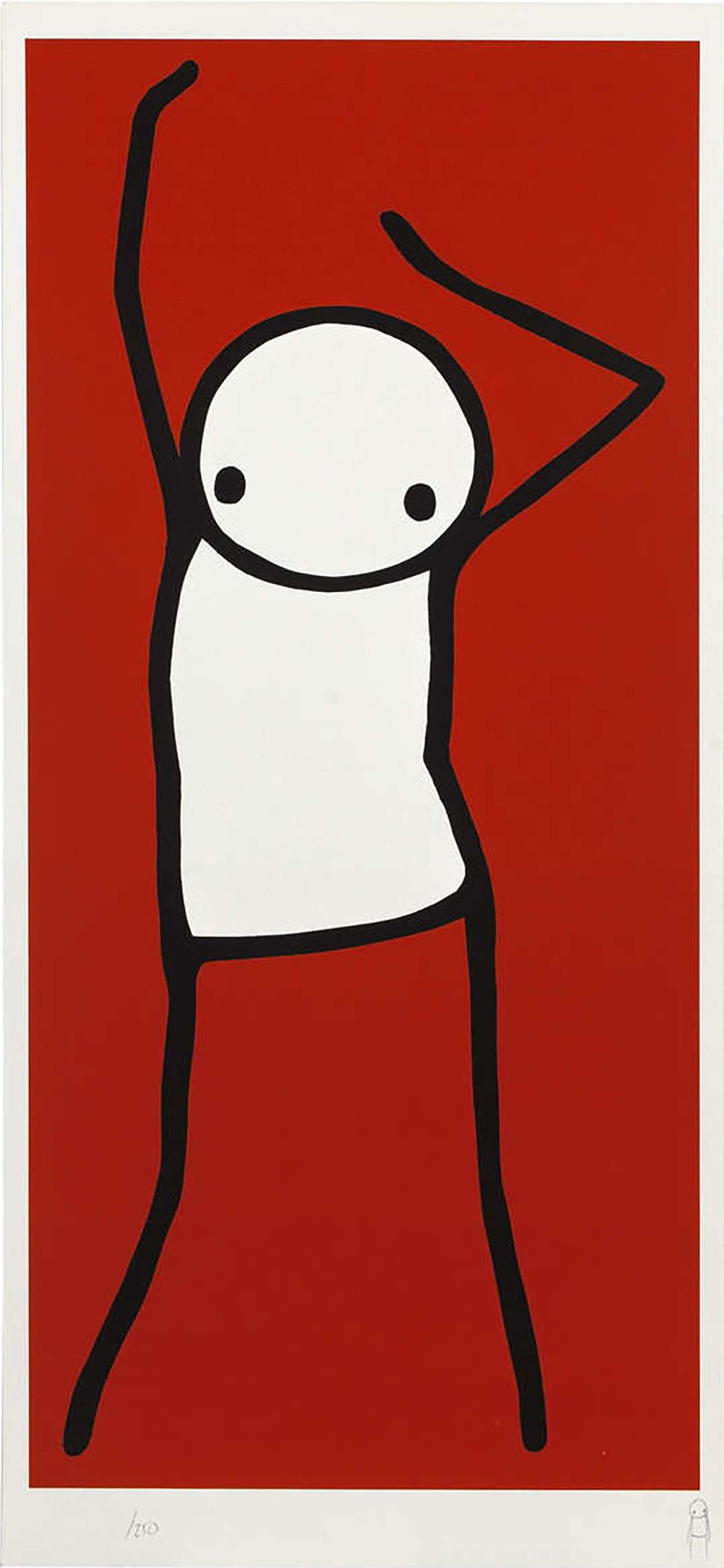
Dancer (red)

Dancer (red)
Signed Print
Stik
£8,500-£12,500
$17,000-$25,000 Value Indicator
$16,000-$23,000 Value Indicator
¥80,000-¥120,000 Value Indicator
€9,500-€14,500 Value Indicator
$90,000-$130,000 Value Indicator
¥1,760,000-¥2,590,000 Value Indicator
$11,500-$17,000 Value Indicator
There aren't enough data points on this work for a comprehensive result. Please speak to a specialist by making an enquiry.
46 x 21cm, Edition of 250, Digital Print
Auction Results

Track auction value trend
Meaning & Analysis
Dancer (red) is a screen print released in 2011 as a signed edition of 250. Dancer is a digital pigment print in black, red and white, on stiff wove paper. In this piece, the stickman rebels against the stasis of his contemporaries in prints like Walk and Hip.
Depicting a dancing stickman, Dancer draws a strong contrast with the stasis which marks the majority of Stik’s work where the stickman is usually still, or at least unsteady on his feet. In Dancer, the movement of the figure is obvious, palpable and deliberate as the figure’s limbs extend and contort outwards. Yet there remains an awkwardness and discomfort in the figure’s gait; the stick man could be stretching or straining rather than joyfully dancing. Nevertheless, there is an air of liberation, emphasised by the figure lacking the disconcerted gaze which defines iconic pieces such as Big Mother and Holding Hands.
The idea that Stik’s figures are constituted by ‘lines of consciousness’ in a rejection of strict anatomical reality, as Anthony Haden-Guest describes in the foreword to Stik’s 2015 book, is at the forefront in Dancer. The artist’s lines effortlessly convey the ineffably freeing feeling of dance.